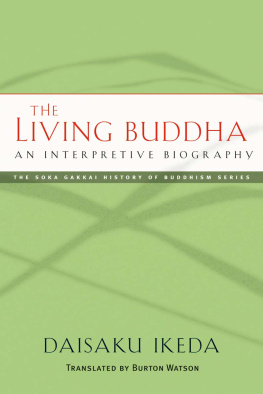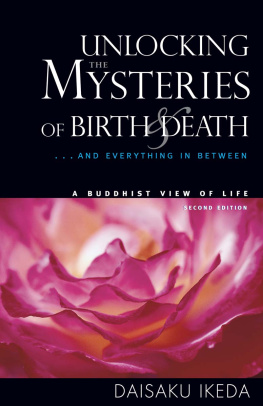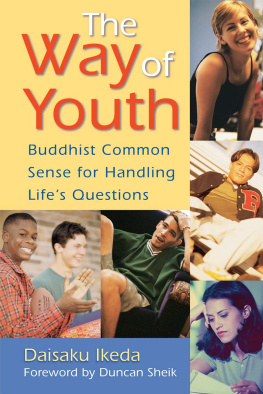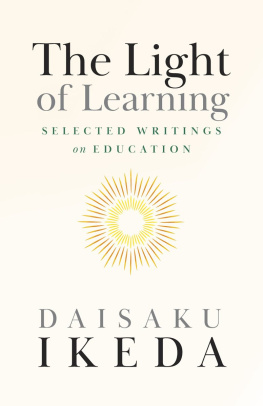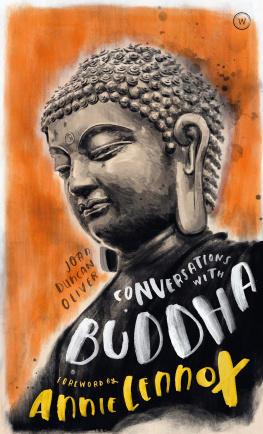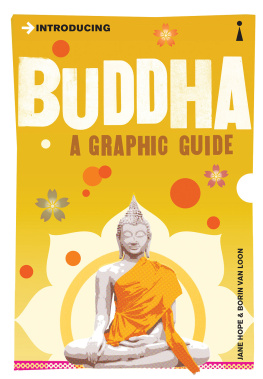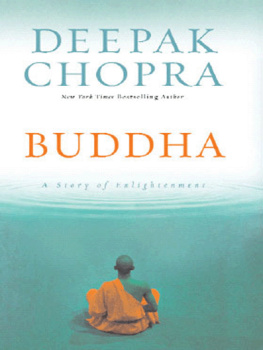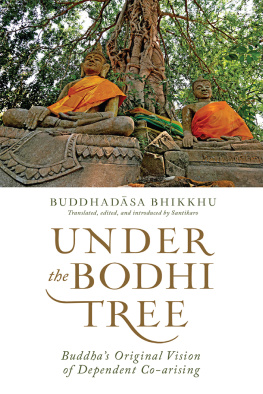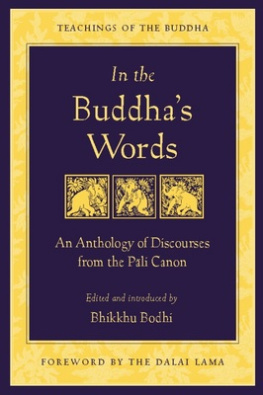

Published by Middleway Press
A division of the SGI-USA
606 Wilshire Blvd., Santa Monica, CA 90401
1973, 1976 by Daisaku Ikeda
2008 Soka Gakkai
ISBN 978-0-9779245-2-3
All rights reserved
Printed in the United States of America
Cover and interior design by Gopa and the Bear
This book originally appeared in Japanese under the title
Watakushi no Shakuson-kan (My View of Shakyamuni),
published by Bungei Shunju, Tokyo, 1973.
10 9 8 7 6 5 4 3 2 1
CONTENTS
PREFACE TO THE
ENGLISH EDITION
Shakyamuni was a man who lived some twenty-five hundred years ago in central northern India and who earnestly and untiringly sought to discover the nature of the dharma, or Law, the eternal principles of truth that transcend time and place. He was a thinker of giant proportions who, for the sake of people in ages to come, persisted in his efforts to discover the source of creation and to free human existence from all impediments.
If we, in this present age, were to try to imagine the sort of person Shakyamuni Buddha was, what portrait would emerge? This was the spirit of rather nave interest, curiosity, and in a sense audacity that led to the writing of this book.
But to construct a picture of Shakyamuni Buddha, one first needs certain materialshistorical facts, accurate dates, sources whose reliability is above questionand such materials are, let me note at the outset, regrettably scarce. This is due in part to the fact that the Buddha lived so long ago and in part to the lack of interest in the keeping of historical records that is characteristic of ancient Indian society. But whatever the cause, it renders exceedingly difficult the task of arriving at an accurate picture of the Buddha. At the same time, it makes it possible, and even necessary, for the writer to exercise his imagination to a considerable degree. In this sense, in spite of the great gap in time that separates Shakyamuni Buddha and myself, I think my personal experiences and religious practice have allowed me to achieve a certain feeling for him as an individual. That is why I titled the original Japanese version of this work Watakushi no Shakuson-kan [My View of Shakyamuni] and why the subtitle of the English edition is An Interpretive Biography. It is my firm conviction that one can seek to discover and understand another human individual only through the medium of ones own identity as a human being, and it is on this premise that I have attempted to transcend the barrier of time and approach the man we call the Buddha. In this respect, my portrait of him, rather than being drawn strictly from bibliographical sources, is no doubt strongly colored by the image that I have formed in my mind of him as the leader of a religious organization. For the subjectivity of this approach, I can only beg my readers indulgence.
In this connection, it may be well to note that the Buddhist religion is interested primarily in the question of whether a person realizes within himself the dharma, or principles of eternal truth. For this reason, it is less important, from the religious point of view, to inquire what were the specific words and acts of Shakyamuni Buddha as a historical personage than to discover the nature of the dharma that he attained and to ask if other people can attain it as well. The portrait of a man who has attained the dharmathis is the true Shakyamuni Buddha, and it is he whom we wish to know. If this book is read in light of these particular characteristics of the Buddhist religion, and if it serves in some small measure as a spiritual bridge between the East and the West, then my hopes as an author will have been more than gratified.
In closing, I would like to express my deep appreciation to Professor Burton Watson for the time and effort that he has expended in preparing the English version of this work.
Since 1976, when this English edition first appeared, it has been translated and published in at least eighteen languages. As its author, I am immensely pleased that it has thus won a readership extending throughout the world. The publication of this paperback edition responds to the requests of many readers. It is my sincere hope that those striving to create a better society will find this volume helpful in understanding the life of Asias foremost teacher of human wisdom.
Daisaku Ikeda
TRANSLATORS NOTE
As indicated by Daisaku Ikeda in his Preface to the English Edition, the Japanese work from which this was adapted is titled Watakushi no Shakuson-kan [My View of Shakyamuni], Shakuson being the common Japanese designation for Shakyamuni Buddha. The original work was cast in the form of a dialogue between Mr. Ikeda and one of his associates, but with the authors permission I have, for purposes of smoother reading, recast it in straight narrative form, taking care, of course, to preserve all the factual and speculative material of the original.
Sanskrit and Pali personal names, place names, and technical terms have been introduced in the text in the romanized form that seems most suitable for English readers, without the elaborate diacritical markings demanded by strict Indology.
One point touched upon by Mr. Ikeda in his Preface perhaps deserves special emphasis here for the sake of Western readers. Religions like Judaism, Christianity, and Islam lay great stress upon certain unique historical events or personages and, as a consequence, are vitally concerned with questions of historicity. Buddhism, however, emphasizes the dharma, or body of religious truth, rather than the particular time, place, or person by whom it was preached.
Mr. Ikeda is the dynamic president of the Soka Gakkai International, a lay organization of Nichiren Buddhists. As the spiritual leader of the Soka Gakkai Internationals millions of adherents in Japan and its growing worldwide membership, he is intensely interested in discovering whatever can be known about Shakyamuni Buddha, the historical founder of Buddhism. But if, as a result of the regrettable paucity of reliable sources, his account of Shakyamuni necessarily includes much surmise and conjecture, this in no way affects the validity of Buddhist teachings. What is important, as Mr. Ikeda himself notes, is not the distinction between historical truth and legend in the accounts of Shakyamunis life but the degree to which both fact and legend embody the timeless truths of Buddhism and are meaningful to us today.
1
THE YOUNG SHAKYAMUNI
S HAKYAMUNI
Any Asian person hearing this name will invariably think of Buddhism, for Shakyamuni was the founder of that great world religion. But who was this remarkable man, when and where did he live, and what were the circumstances under which he began the preaching of a new faith? These are some of the questions that I want to pursue in the pages that follow.
I have in my mind an image of what sort of person he must have beena man who, no matter how pressed to choose between one philosophical proposition or another, never forgot how to smile; a sage who, at times with an air of aloofness, at times with an air of pride, and at other times silently and serenely, pursued his own way unperturbed, a way founded upon principles that were engraved on his heart. It is this image of Shakyamuni that I hope to present here.
He was a man who taught neither in terms of any strict or compelling logic nor impassioned dogma, a man who commanded no vast system of philosophy capable of overturning mountains. Rather he was a man who, in almost astonishingly plain and unaffected language, employing anecdotes and analogies that could be comprehended by anyone, sought to awaken in each individual the spirit that dwells in the inner being of all people. By this I do not wish to suggest, however, that Shakyamuni possessed no philosophy at all. When he speaks in his unassuming way to humankind, one catches within the clear and simple words echoes from another realm, that of the truly enlightened man who has contended with and overcome darkness in himself and attained the final resolution of truth.
Next page
